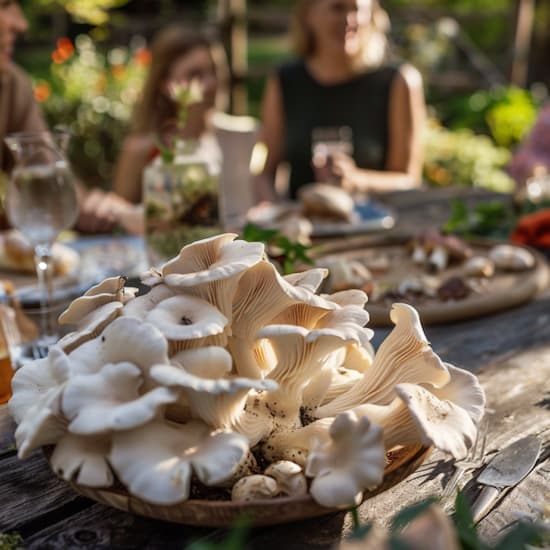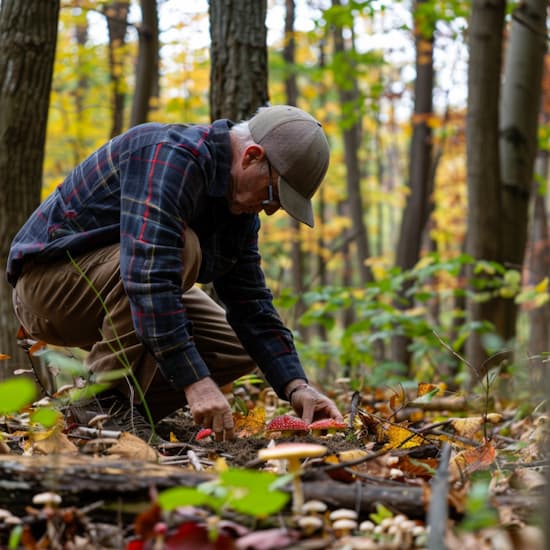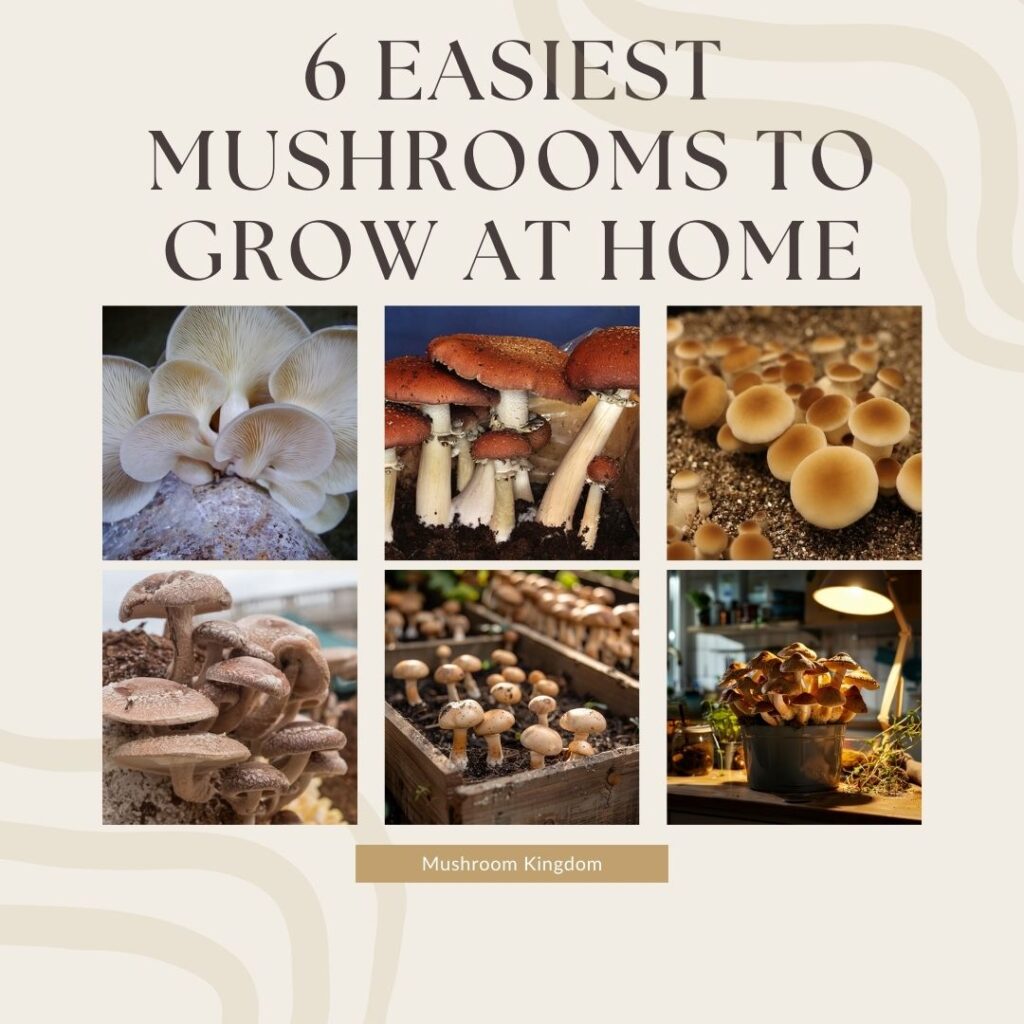Mushroom foraging has captivated outdoor enthusiasts, chefs, and hobbyists across the U.S. With its blend of adventure, sustainability, and culinary potential, mushroom foraging is an excellent way to connect with nature while gathering some of the finest wild ingredients.
If you’re eager to explore the best national parks in the U.S. for mushroom hunting, this guide will lead you through a variety of top destinations that offer the perfect conditions for a fruitful (or fungi-filled) experience.
1. Olympic National Park, Washington
The Perfect Climate for Fungi
Olympic National Park, located in Washington state, ranks high for mushroom foraging due to its damp, temperate rainforests. The park’s abundant rainfall and moist conditions provide the ideal habitat for a wide variety of fungi.
Whether you’re a beginner or an experienced forager, you’ll find an impressive selection of mushrooms here, including chanterelles, matsutake, and chicken of the woods.

The coastal forests within the park create the perfect environment for mushroom growth, particularly in the fall when rain becomes more consistent. Foragers can roam the old-growth forests and mossy trails, seeking out these fungal treasures.
Foraging Tips
- Fall is prime time: September through November is when mushrooms flourish in Olympic National Park.
- Permits are required: Be sure to check for necessary permits and adhere to park regulations regarding foraging limits.
- Stick to well-identified species: Olympic National Park is home to some poisonous varieties, so avoid anything you’re unsure of.
2. Great Smoky Mountains National Park, Tennessee and North Carolina
A Mushroom Haven in the Appalachians
The Great Smoky Mountains, straddling Tennessee and North Carolina, offer one of the richest ecosystems for mushroom foragers in the United States.
The park’s humid climate and diverse elevation create microhabitats where a vast array of fungi thrive. From the lower forests to the higher elevations, you’ll encounter species like morels, oyster mushrooms, and puffballs.

What makes Great Smoky Mountains National Park stand out for foragers is the sheer diversity of mushrooms. Some of the most popular species you can find include hen-of-the-woods and black trumpets. These forests contain an abundance of downed logs and rich soil, which contribute to their mushroom bounty.
Foraging Tips
- Look in deciduous forests: Species like morels and chanterelles often grow near oak, beech, and maple trees.
- Watch for weather shifts: The park’s climate can change quickly, so pack rain gear and prepare for different conditions.
- Attend a guided foraging walk: Great Smoky Mountains National Park often offers educational programs that introduce beginners to mushroom identification and foraging practices.
3. Shenandoah National Park, Virginia
Foraging in the Blue Ridge Mountains
Shenandoah National Park in Virginia is another excellent location for mushroom foraging, especially in the lush Blue Ridge Mountains. The park’s cooler, wet environment in spring and fall supports the growth of many mushroom species.
Visitors often find yellow chanterelles, lion’s mane, and black trumpets nestled along the park’s trails.

In addition to fungi, Shenandoah’s beauty adds to the foraging experience. Scenic vistas, waterfalls, and wildlife sightings make it an adventure that goes beyond just mushrooms. While exploring the forested slopes, keep an eye out for turkey tails and reishi mushrooms, which are known for their medicinal properties.
Foraging Tips
- Best for fall foraging: While you can find some species in spring, fall (late September to November) provides the richest variety of mushrooms.
- Stay on public lands: Mushroom foraging is allowed in certain parts of the park, but it’s crucial to stay within designated areas.
- Bring a mushroom identification guide: Shenandoah is home to a number of poisonous mushrooms. Ensure you correctly identify what you pick.
4. Yosemite National Park, California
A Diverse Mushroom Scene in the Sierra Nevada
Though Yosemite National Park may be better known for its towering granite cliffs and sequoias, its forests also harbor an impressive variety of mushrooms. The park’s diverse ecosystem, spanning from alpine regions to lower elevation forests, provides ample foraging opportunities.
With the right conditions, especially after wet winters, you can find porcini, morels, and amanita muscaria.
Yosemite’s mushroom season typically peaks in spring and fall. You’re more likely to spot mushrooms in the areas with dense forests, like the Mariposa Grove of Giant Sequoias or along the misty, shaded paths of Yosemite Valley.
However, foraging here can require more effort, as the park’s vastness demands some exploration.
Foraging Tips
- Ideal after rain: Mushrooms often sprout after a good rain, so monitor the weather during spring or fall.
- Stay alert for wildlife: Yosemite is home to bears and other large animals. Foragers should always stay alert while exploring.
- Research regulations: Yosemite National Park has strict rules about foraging. Some areas may restrict gathering, so familiarize yourself with the park’s guidelines before collecting mushrooms.
5. Mount Rainier National Park, Washington
Abundant Mushrooms Near Glacial Peaks
Mount Rainier National Park, with its towering snow-capped peak, offers a diverse range of habitats where mushrooms flourish. The park’s old-growth forests are particularly fruitful in autumn, with species like chanterelles, matsutake, and lobster mushrooms being commonly found.

The volcanic soil around Mount Rainier nurtures a wide range of mushrooms, and the high precipitation levels ensure moist, fertile conditions year-round.
The Nisqually River Valley and the Carbon River area are prime spots for mushroom hunters. Both areas provide the dark, damp conditions many species need to thrive.
Foraging Tips
- Explore the lower elevations: For the best chances of finding edible mushrooms, stick to areas with rich soil and decomposing plant matter, such as old-growth forests.
- Timing is key: Foraging is most productive from late September to mid-November.
- Check for permits: Always inquire about permits and restrictions before collecting mushrooms in Mount Rainier National Park.
6. Acadia National Park, Maine
Mushrooms of the Northern Coast
Acadia National Park, located on Maine’s Atlantic coastline, offers a unique mushroom foraging experience compared to the more inland parks. The park’s combination of coastal forests, cool temperatures, and frequent moisture create an environment where many mushroom species thrive. Common finds include chanterelles, oyster mushrooms, and various boletes.
One of the best things about foraging in Acadia is the scenic coastal backdrop. The mix of rocky shores and lush forests makes it a one-of-a-kind location for mushroom hunters.
You can hike along the park’s numerous trails and keep your eyes peeled for edible varieties growing in clusters along fallen logs or nestled in the mossy undergrowth.
Foraging Tips
- Best in early fall: Late summer and early fall provide the optimal conditions for mushroom growth in Acadia.
- Respect the park’s limits: Acadia has specific rules about foraging, so it’s important to stick to the designated areas and follow all guidelines.
- Go slow and look closely: Many mushrooms in Acadia are small and blend into their surroundings. Take your time when exploring the forest floor.
7. Rocky Mountain National Park, Colorado
High Altitude, High Rewards
Though not traditionally thought of as a prime mushroom destination, Rocky Mountain National Park offers some unique foraging opportunities for those willing to venture into higher elevations.
The park’s subalpine and montane ecosystems are home to a variety of mushrooms, including morels, porcini, and puffballs. The cooler summer temperatures combined with the moist, shady conditions created by the towering pines make it a haven for fungi.
The best mushroom hunting occurs after rainfall in the late summer and early fall months. Foraging in this high-altitude environment presents challenges, but the rewards can be substantial for those who know where to look.
Foraging Tips
- Target elevations between 8,000 and 10,000 feet: This is where most edible mushrooms in the park grow.
- Prepare for the altitude: The park’s high elevations can lead to altitude sickness. Take your time and stay hydrated while foraging.
- Look for moisture: Mushrooms thrive in damp areas, so seek out spots where water is likely to collect, such as along streams or in shaded forested areas.
8. Sequoia and Kings Canyon National Parks, California
A Forager’s Paradise
Sequoia and Kings Canyon National Parks offer some of California’s most magnificent forests, home to giant trees and a rich diversity of fungi. The forests, covered in thick layers of fallen leaves and pine needles, create a perfect environment for mushrooms like morels, black trumpets, and various boletes. In particular, the wet seasons following winter rains provide the best mushroom foraging conditions.
Both parks feature a variety of ecosystems, from the lowland forests to higher elevations near the Sierra Nevada peaks. This variety means you’ll find different species depending on where you explore.
Foraging Tips
- Best times are after rains: Plan your visit following a rainstorm, usually in spring or fall.
- Stay aware of wildlife: These parks are home to black bears and other animals, so keep your surroundings in check.
- Bring a knowledgeable guide: The variety of mushrooms can be overwhelming. Having an experienced forager or guide can help ensure safe and fruitful collecting.


